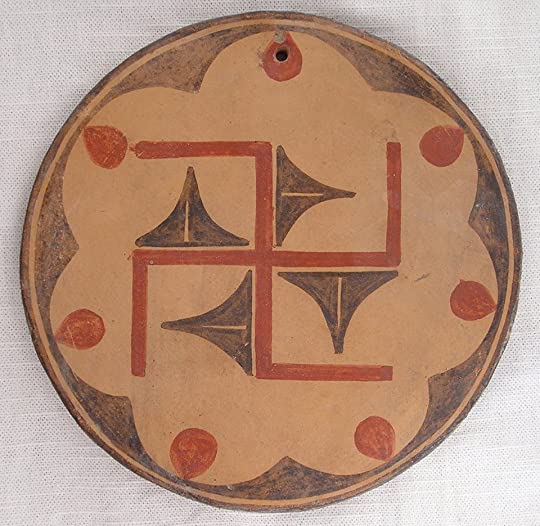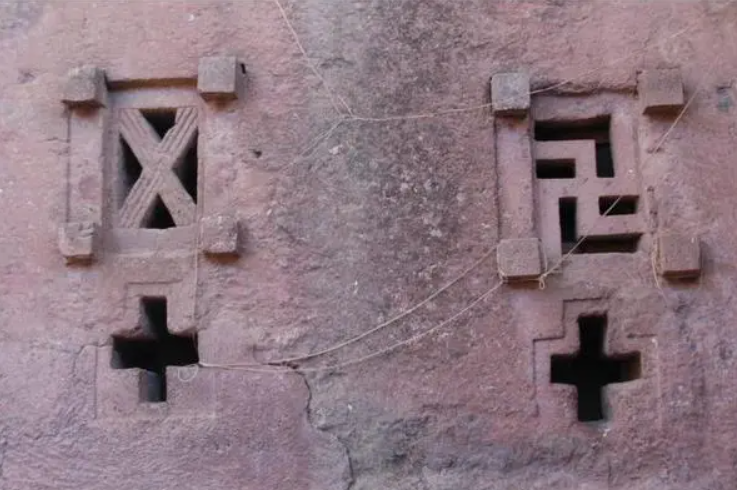In a previous post, I argued that the Swastika is not the ‘evil’ symbol it is commonly deemed to be today. That in fact prior to its adoption by Nazi Germany, this symbol was widely used by cultures around the world. Swastika is a symbol of the ancient world. It was certainly in Lemuria, which was one of the earliest civilizations of the last 100,000 years. James Churchward in his books on Lemuria has provided evidence to show that the symbol was used by the people of that culture. It is possible that this symbol, the Swastika, even predates the ancient civilization of Lemuria.

However, it is with diverse descendant cultures of Lemuria that we find many instances of the Swastika. In Asia, we certainly find it used in the spiritual traditions of Hinduism, Jainism and in Buddhism. The Swastika also appears in Japan and in Tibet. In the Americas, the Swastika (or a symbol very close to what we know it to be) features among a number of Native American cultures that derive from Lemuria and that also have connections with Asia. One of those is the Navajo (i.e., Na dene) group who have some uncanny similarities with Tibetan peoples. Close to the Navajo are the Hopi people, who also have this symbol. For Navajo and Hopi, the Swastika is a symbol of the four directions. Of the Hopi, we now know of their traditions of migration from Lemuria to the Americas. In The Lost Continent of Mu, James Churchward tells us that “The Swastika, popularly called the “good luck symbol” and one of the many symbols of the Four Great Primary Forces, was a favorite symbol among the ancients throughout the world, and still clings to the heart of present humanity.” This was before Hitler and World War II. Things have changed since then.

Elsewhere in the Americas, this time in Central America, the Swastika (or symbols very close to it) appear in the Maya and Aztec cultures. Further south, the Inca culture also features the Swastika. Incas definitely have a connection with Lemuria, and all of these cultures also have connections with Nagas, Naacals, Naguals, Nahuatl (different spellings of the same serpent brotherhood and sisterhood of Lemuria).

The appearance of swastikas in places where nagas have been known to be (in Asia and in the Americas) also appears to be consistent in Africa. Two of the cultures in Africa that both have nagas in their histories and also spot swastikas are the Akan and the Abyssinian/Ethiopian cultures. One was the ancient Ghana empire, whose system of rule is still practiced today by the Akan people of West Africa, and whose people have been shown to have interacted with nagas. The other is the Abyssinian dynasty (Ethiopia) who have been shown to have interacted with a naga culture prior to the rule of the dynastic human kings. Among the Akan, swastikas were made in gold weights. Among the Ethiopians, swastikas appeared on/in buildings. For example, the Biete Maryam (shown above) has a Swastika in it as a window design. The Akan version of the Swastika is perhaps most similar to the Chinese version (wan) in that both Akan and Chinese have the two directions for the Swastika. Where in the Chinese culture the pair are brought together to represent infinity, in the Akan culture, one direction represents the king (male energy) and the other direction represents the queen (female energy).
Article Themes: Ancient symbols, Sun worship, Peace sign
References
Cloth as Metaphor – (Re)Reading the Adinkra Cloth Symbols of the Akan of Ghana [WorldCat]
The Lost Continent of Mu [WorldCat][Google scholar]
What’s the Original Meaning of the Swastika? [symbolsage.com]
Swastika: Its Real Meaning [stephen-knapp.com]
A symbol that looks like a swastika is sacred to some Native Americans | Anita Durairaj [eighttribes.org]
Why are there Swastika symbols on Lalibela churches in Ethiopia? [ethiopinaforeignpolicy.com]



